Gather the ingredients for the vegetarian carbonara spaghetti

To prepare this vegetarian spaghetti carbonara, you'll require: olive oil, breadcrumbs, salt, spaghetti, vegetarian sausages, zucchini, garlic, egg yolks, Parmesan cheese, black pepper, and basil leaves. If you're opting for a vegetarian version, be sure to choose a rennet-free Parmesan cheese (more on that later).
While zucchini is an excellent choice for this recipe, it can be easily replaced with other seasonal vegetables, allowing you to keep the dish's essence intact. Asparagus and tender-stem broccoli make great alternatives, contributing vibrant green color and flavor to this vegetarian pasta dish.
Step 1: Place a pan over heat
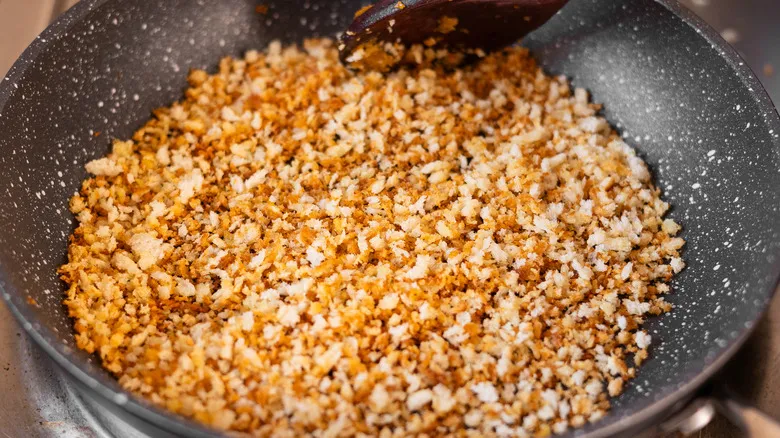
Heat a pan over medium heat and add 1 tablespoon of oil along with the panko breadcrumbs.
Step 2: Toast the breadcrumbs

Toast the breadcrumbs, stirring occasionally, until they turn golden brown. Transfer to a bowl and set aside for later use.
Step 3: Boil the water
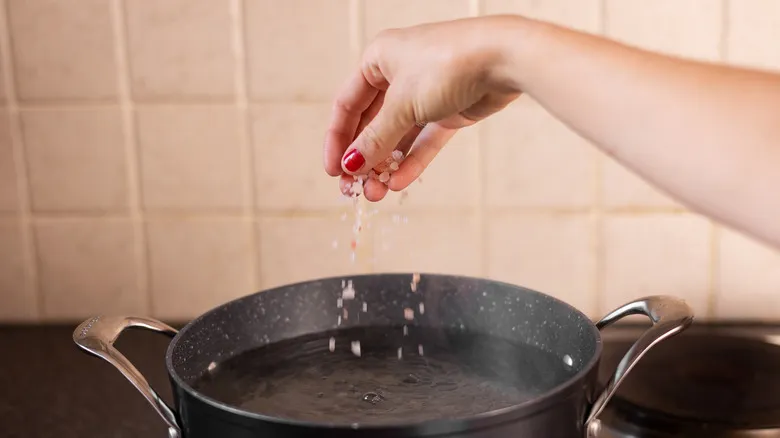
Fill a large pot with water and add the salt. Bring it to a boil.
Step 4: Cook the spaghetti

Incorporate the spaghetti and boil for 8 minutes or until it reaches an al dente texture.
Step 5: Reserve the pasta water

Set aside 2 cups of the pasta water for future use.
Step 6: Saute zucchini and sausages

As the pasta cooks, heat a large pan over medium heat and add the remaining olive oil, vegetarian sausage, and sliced zucchini. Sauté the sausage and zucchini for about 7 minutes, or until they turn golden brown.
Step 7: Stir through the garlic

In the final minute of cooking, incorporate the garlic and mix until aromatic.
Step 8: Make the sauce

In a small bowl, combine the egg yolks, grated Parmesan cheese, and pepper using a fork.
Step 9: Temper the egg yolks

Gradually incorporate ¾ cup of the warm pasta water in a steady stream while continuously stirring with the fork. This will help avoid scrambling the yolk.
Step 10: Add the spaghetti and zucchinis

Incorporate the cooked spaghetti and the tempered egg yolks into the pan containing zucchini and sausage. Warm over medium-low heat.
Step 11: Toss the pasta

Mix the sauce into the spaghetti until it becomes smooth, thickened, and evenly coats each strand of pasta. If necessary, add a bit more pasta water to loosen the sauce.
Step 12: Serve the pasta

Quickly take the pan off the heat and serve the vegetarian carbonara.
Step 13: Garnish the pasta

Top each bowl with a dash of toasted breadcrumbs and fresh basil leaves.
Is Parmesan cheese vegetarian?

Parmesan cheese is not considered vegetarian in its traditional production method, which typically involves the use of animal-derived rennet. Rennet is an enzyme obtained from the stomach lining of calves and plays a crucial role in the coagulation of milk during the cheese-making process. However, there is good news for cheese lovers who follow a vegetarian diet: rennet-free Parmesan alternatives are becoming more widely available. These options utilize microbial or plant-based coagulants instead of animal rennet, making them suitable for vegetarians while still maintaining the cheese's unique flavor and texture.
Douglas notes, "Fortunately, finding rennet-free Parmesan has become increasingly common and accessible in recent years. Many cheese makers now offer vegetarian-friendly varieties that are clearly labeled, providing peace of mind for those adhering to vegetarian diets." This greater availability allows cheese enthusiasts to enjoy the rich flavors and culinary versatility of Parmesan without compromising their dietary choices or taste preferences.
Why is tempering egg yolks important when making carbonara?

Tempering egg yolks is a vital step in preparing carbonara, essential for achieving a creamy texture without turning the eggs into scrambled bits. This technique involves slowly adding a hot liquid—usually pasta water—to the egg yolks while whisking continuously. This gradual process helps prevent the yolks from cooking too quickly or curdling when mixed with the hot pasta, as Douglas points out. Here’s why this method is so important:
Egg yolks are highly sensitive to heat. If they come into contact with the high temperatures of the pasta or sautéed ingredients too suddenly, they can coagulate, leading to the undesirable outcome of scrambled eggs. By tempering the yolks slowly, you can raise their temperature without shocking them, thus avoiding any unwanted texture changes. When the yolks are properly tempered and combined with the starchy pasta water and Parmesan, they form a rich, silky sauce that beautifully coats each strand of spaghetti.
Recommended
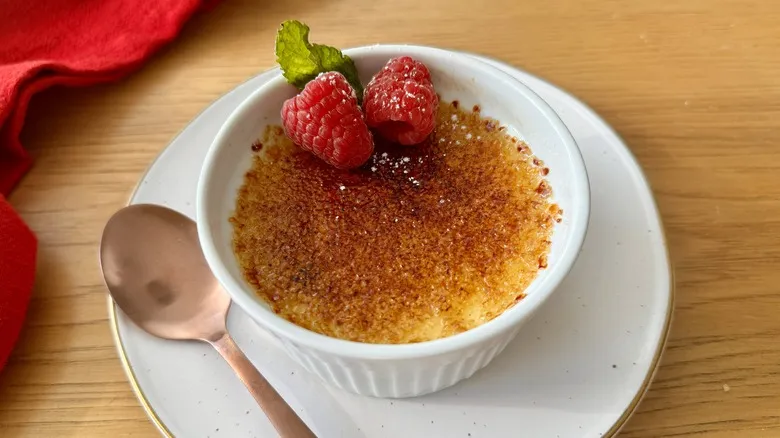
Classic Foolproof Crème Brûlée Recipe
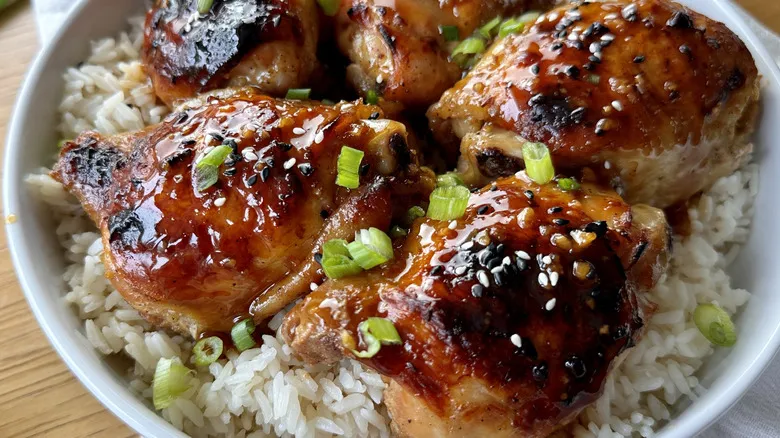
Honey Soy Marinated Baked Chicken Thighs Recipe
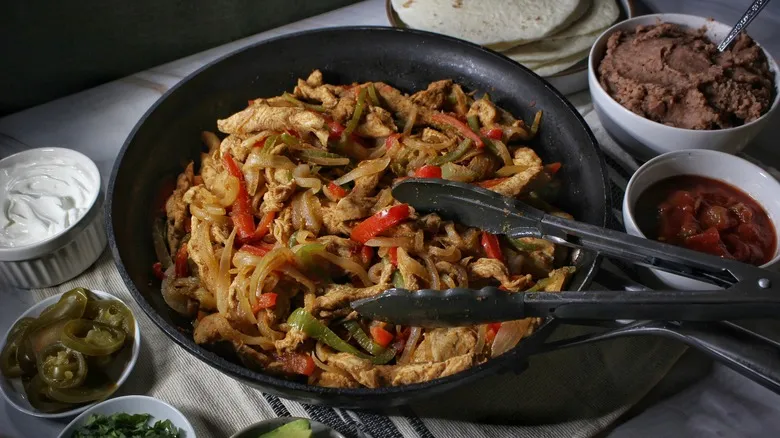
Simple One-Pan Chicken Fajitas Recipe

Bakery-Style Peanut Butter Cookies Recipe
Next up

